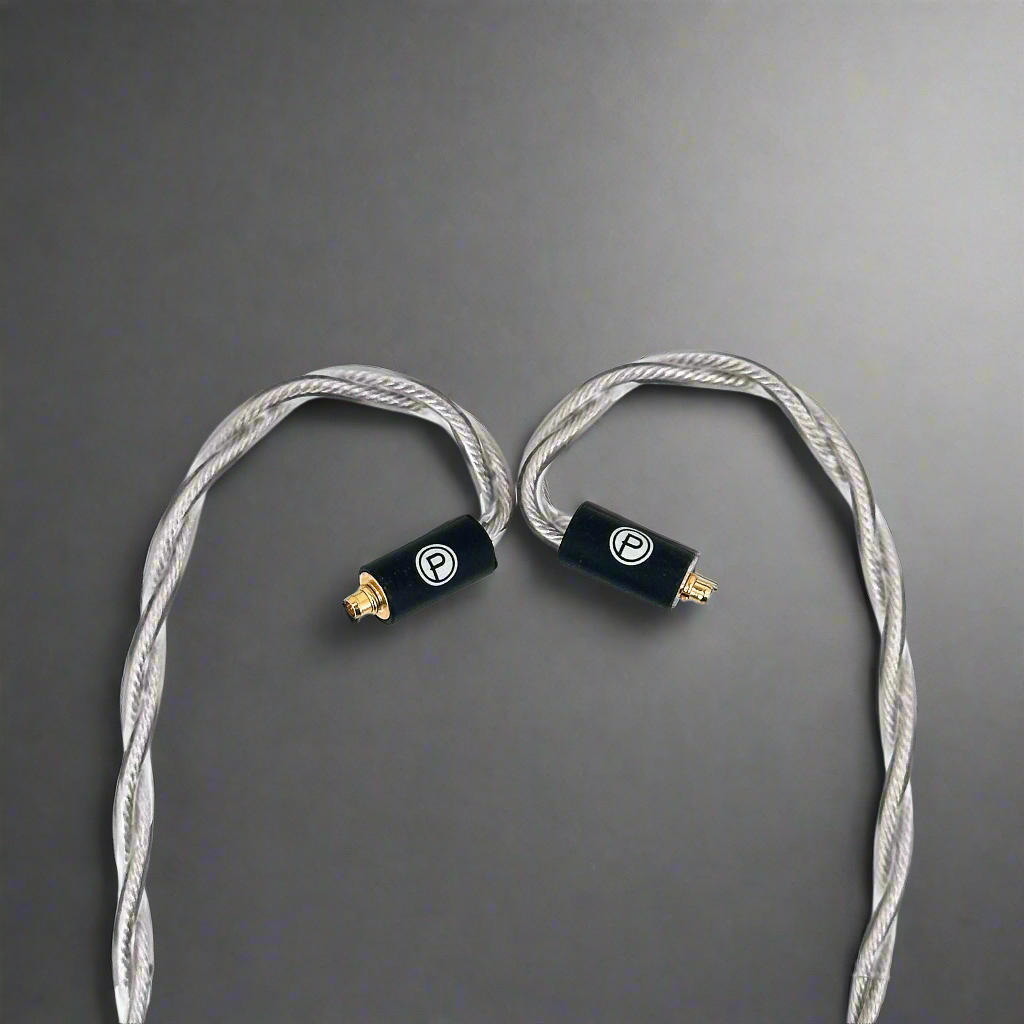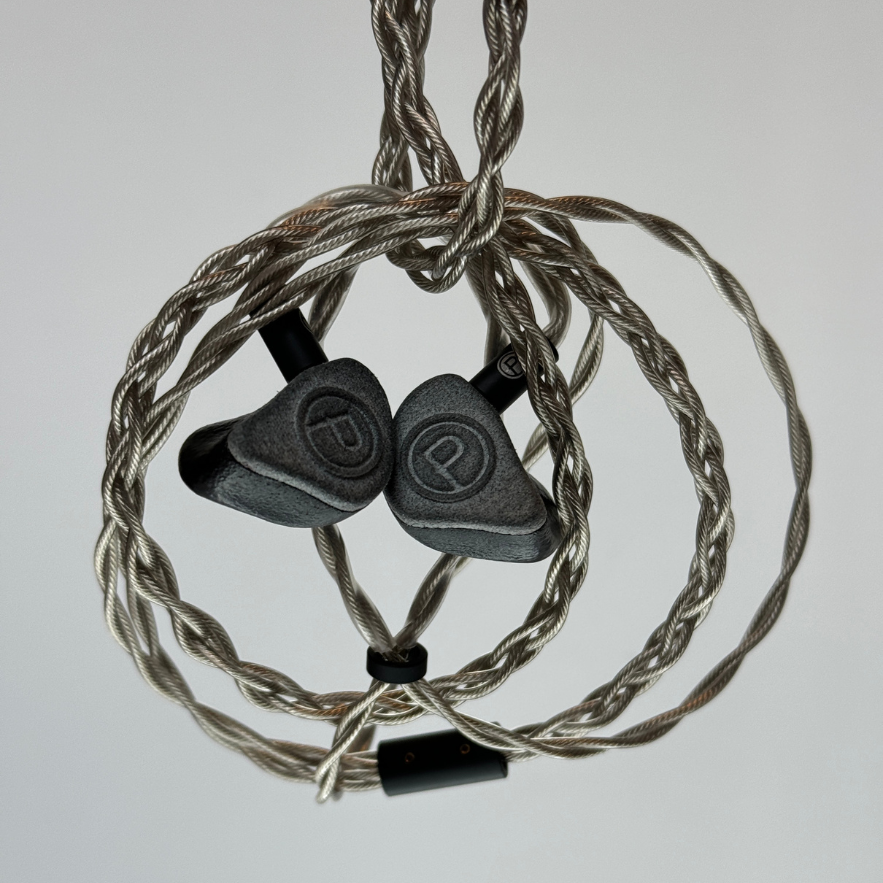IEM cables play a crucial role in delivering the best audio performance. Many companies specialize in these, and some manufacturers boldly claim that their cables are better than others. So, does a cable directly impact sound quality? If so, how is this possible, and how do we find the best cables?
Read below as we dive into the details of IEM cables and how they impact the sound quality.
Understanding Audio Cables- The Ins and Outs
When people talk about sound performance, audio cables rarely come up, even though they're vital to creating an immersive listening experience. For many audiophiles, the quality of their listening experience is significantly impacted by the cables they choose.
A cable's primary purpose is to transmit audio signals from the source to the IEMs. The quality of this signal transmission directly impacts the sound. However, several factors play a part in deciding the cable’s quality:
1. Conductor:
A cable's conductor transmits the power and signals in the cable. Adequately sized and constructed conductors maintain the integrity of the electrical signal since it needs to travel effectively to the cable from its source. If the conductor is made from compromised materials, the audio signal may experience increased resistance and change overall sound quality.
Some of the common conductors include:
-
Copper:
Due to its cost-effectiveness and high electrical conductivity, manufacturers often use copper. Investing in premium copper cables can improve sound quality and less signal distortion.
-
Silver:
Silver is a renowned conductor material like copper due to its higher electrical conductivity. As a result, these cables provide a clearer and more detailed sound.
-
Silver-Plated:
Copper cables with silver plating combine the benefits of copper and silver. The silver coating enhances the signal's precision and clarity, while the copper core offers outstanding sound conductivity, improving the overall sound experience.
2. Insulation:
IEM cables are incomplete without insulation, which shields the conductor from external disruptions and physical harm. The insulation material affects both the length of a cable and its sound quality.
PVC is one of the common insulation materials used in IEM cables. It provides outstanding flexibility and durability in the long run. In addition to having good electrical insulating characteristics, it is reasonably priced, making the IEM cable affordable.
3. Shielding:
Reducing or eliminating background noise that the conductor takes up from various sources is an essential aspect of high-quality audio. Shielding plays a pivotal role by protecting the audio signal from radio frequency interference and electromagnetic interference. With proper shielding, you can ensure that you enjoy audio without any noise or external distortion.
4. Connector:
Connectors are an essential part of an IEM cable. They connect your IEMs to your audio source physically and electrically. High-quality connectors avoid signal loss and achieve the best possible sound quality, elevating the overall listening experience.
Study a connector’s quality, material, and strain relief before investing in an IEM cable.
Do Cables Make a Difference on Audio Performance?
Yes, definitely, your audio cables do impact the sound performance. Ideally, the wires provide an accurate and transparent translation of the original audio. However, poor cables are more susceptible to noise interference or deterioration in certain situations, leading to reduced audio performance and, ultimately, a compromised listening experience.
Invest in High-Quality IEM Cables- Buy at Plunge Audio
One often overlooked part of audio is the effect of cables on the overall sound quality. If you invest in the right IEM cables, you can effortlessly enhance the overall performance of the IEMs and enjoy an improved listening experience. With the guide above, you can now make an informed decision and choose the suitable cable for your IEMs.
If you wish to avoid the challenge of finding the best cable for your IEMs, Plunge Audio is here to help. Compatible with the Unity Universal IEM from Plunge Audio and all other MMCX in-ear monitors, our superior replacement cable is the perfect accessory for IEMs. An excellent silver-plated copper conductor and a sturdy PVC jacket provide this cable the reliability and flexibility you need for top-notch audio performances.
Some of the specifications for our 50” MMCX Cable include;
- MMCX connectors
- Conductor: Type 2 Litz, 5N Silver Plated Copper LC-OFC
- Specification: 49*0.05mm, ~24.5AWG, PVC RoHs Jacket, four wire braided, 3.5mm TRS with MMCX
- Approx. 1.3m / 51" length
Plunge Audio also offers a 72” MMCX Cable which features;
- MCX connectors
- Conductor: Litz 5N OCC copper,
- Specification: 63*0.05mm, 25AWG, PVC RoHs Jacket, eight wires weaved, 3.5mm TRS with mmcx
- OCC purity: 99.999%
- 1.83m / 72" length
Frequently Asked Questions:
- Why do musicians and performers use IEMs?
Musicians and performers invest in IEMs for exceptional sound quality. To create an immersive listening experience, the best audiophiles choose IEMs that offer comprehensive frequency response, unmatched clarity, and superior noise isolation. The lightweight construction of IEMs guarantees all-day comfort and durability without straining your ears.
2. What material is best for IEM cables?
Although copper is the most common material for IEM cables, experts suggest silver cables offer a better detailed and brighter sound.
3. How do I choose a suitable IEM cable?
Choosing a suitable IEM cable depends on your budget, preferred sound quality, and listening environment. The best action is to read online reviews and buy from a reputable seller like Plunge Audio.



